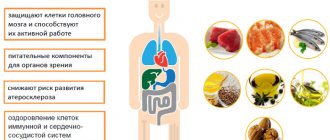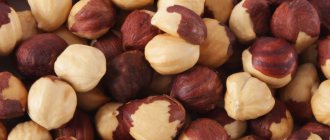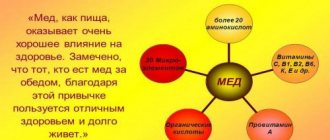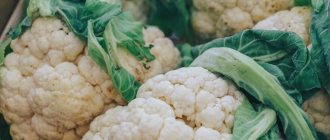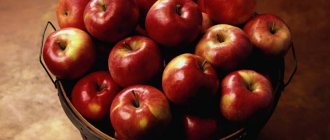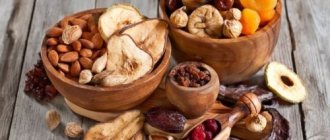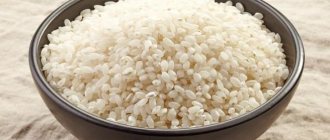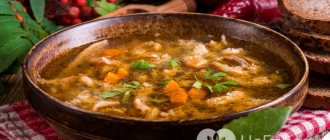Dried fruits - beneficial properties, calorie content and harm to the body
Dried fruits are a natural product that is made by drying ripe fruits and berries. The influence of dried fruits on the human body is colossal; sometimes such a product is even healthier than fresh fruit.
We are talking about natural treats, made without the use of chemicals and not encased in sugar. In the latter case, it's more candy than healthy berries. Dried fruits are great for people who want to lose weight, as they satisfy the desire to eat something sweet. Treats are also suitable for the diet of athletes - they charge the body with energy and saturate the body with vitamins and minerals.
Peculiarities
By their nature, dried fruits are, indeed, fruits in their pure form, only in dried form. Nutritionists say that your health will definitely improve if you introduce a small portion of this delicacy into your daily diet. It is especially valuable if they are prepared in a natural way, since this preserves the ideal balance of vitamins and microelements. For example, just a few cloves of dried apricots can cover the body’s daily requirement for iron, which helps maintain an optimal level of hemoglobin in the blood, making us more efficient, resilient and energetic.
Dried fruits are natural products that do not contain preservatives, dyes, stabilizers or emulsifiers. But here we are talking only about a high-quality product, so before purchasing a package of raisins, dried apricots or dates, carefully read the composition.
Calorie content and composition of dried fruits
The calorie content and chemical composition of dried fruits depend on the berry or fruit from which they were obtained. On average, calorie content ranges from 200 to 250 kcal per 100 g. This figure is much higher than in the original product, however, the concentration of useful elements in a serving of dried fruit will be several times higher than, for example, in an apple, apricot, pear, grapes and etc.
Let's look at the caloric content and quantitative indicator of sugar per 100 g of the most common types of dried fruits in the table:
| Product name | Sugar capacity, g | Calorie content, kcal |
| Dried apricots | 72,1 | 215,6 |
| Dried apples | 61,9 | 230,9 |
| Prunes | 69,1 | 232,1 |
| Dates | 74,1 | 291,9 |
| Dried pear | 63,2 | 250,1 |
| Figs | 77,8 | 256,8 |
| Raisin | 72,2 | 263,6 |
| Dried cherries | — | 290,1 |
| Dried apricots | 52,6 | 212,6 |
Despite the high calorie content of dried apples, it is this dried fruit that is most recommended to be consumed while on a diet, of course, in moderation: no more than 30-50 g per day.
Nutritional value of dried fruits per 100 g:
| Berry/fruit | Proteins, g | Fats, g | Carbohydrates, g |
| Dried apricots | 5,1 | 0,29 | 51,2 |
| Prunes | 2,4 | 0,8 | 57,6 |
| Figs | 0,8 | 0,3 | 13,8 |
| A pineapple | 0,5 | 0,2 | 10,8 |
| Dates | 2,6 | 0,6 | 68,8 |
| Raisin | 2,8 | 0,62 | 65,9 |
| Apples | 2,3 | 0,11 | 58,9 |
| Pears | 2,4 | 0,7 | 63,1 |
During the process of natural drying of fruits and berries, they decrease in volume due to the evaporation of water, but the amount of carbohydrates does not change in any way, so the calorie content of the finished product increases.
The chemical composition of dried fruits is rich in a variety of vitamins, minerals and acids, which are so necessary for the proper functioning of the human body. The list of useful elements in each type of delicacy is varied, but all contain fructose, organic acids, glucose in large quantities, B vitamins, pectin, vitamins A and P.
In addition, dried fruits are rich in:
Unfortunately, during the process of natural or other types of drying, as well as during the treatment of products with chemicals (which help keep dried fruits edible for a longer time), vitamin C is destroyed.
How many calories do they contain?
Proteins - 0.7 - 5.1
Fats – 0.0 – 0.9
Carbohydrates – 9.4 – 82.0
Naturally, the calorie content of dried fruits depends on their type.
It has been observed that the most calories per day are consumed during snacks. So, dried fruits are an ideal option to satisfy hunger between main meals, because they:
- do not take up much space, weigh little;
- contain a large amount of fiber;
- very nutritious, quickly saturate the body.
But this type of snack is not suitable for people with diabetes, since dried fruits contain a lot of sucrose, fructose and an increased glycemic index.
It's hard to believe that the number of calories in fresh fruit is much less than in dried fruit. The high energy value of dry fruit is explained by the fact that a large proportion of its mass is occupied by carbohydrates.
But their fat content is very low. The average number of kilocalories in 100 grams of dried fruits is 300, and if you keep a food diary and do strict calculations, then use special tables of calorie content of dried fruits per 100 grams.
For example, in 100 grams:
- dried apples - 253 kcal;
- bananas - 346 kcal;
- pears - 270 kcal;
- prunes - 256 kcal;
- raisins - 280 kcal;
- dried apricots - 232 kcal;
- dates - 292 kcal;
- figs - 257 kcal;
- melons - 341 kcal.
Read more: Calorie content of popcorn, benefits and harms
The numbers are quite high, but you shouldn’t immediately panic and deny yourself eating these sweets. The fact is that 100 grams of any dried fruit contains a huge number of pieces of fruit or berries. You can get your fill of a handful of a mixture of various dried fruits, the weight of which is about 30-40 grams, which means that the calories are 3 times less than the table values.
But we should also not forget that their nutritional value (BJU) is very high, since they contain the least amount of fat, and the content of proteins and carbohydrates is balanced. That is why dried fruits are so widely used in dietary nutrition.
Beneficial properties for the body
The beneficial properties for the body of each type of dried fruit differ from each other, let’s consider the most commonly used:
| Name of dried fruits | Benefit for health |
| Raisin | Restores the body's strength, especially effective during colds or flu; normalizes intestinal function, cleanses of toxins; restores the functioning of the circulatory system; helps overcome diarrhea and abdominal pain (for this you need to cook a decoction based on raisins); helps cope with dehydration in case of poisoning. |
| Dried apples | Prevent problems in the thyroid gland and promote its treatment; protect the body from premature aging; improve tooth enamel and increase teeth strength; normalize the functioning of the nervous, digestive and cardiovascular systems. |
| Dried apricots (dried apricots) | Increases hemoglobin levels; has an antiviral effect; reduces the level of bad cholesterol; has a positive effect on the functioning of the heart; improves vision; cleanses the intestines and body of toxins, toxins and poisons. |
| Dried pear | Has an anti-inflammatory effect and perfectly fights colds; has antidepressant properties; improves the functioning of the digestive system; normalizes urinary function. |
| Prunes | Improves heart function; relieves constipation and bloating; improves metabolism; helps in the treatment of liver and kidneys; kills harmful bacteria in the oral cavity; normalizes the functioning of the gastrointestinal tract. |
| Figs | Acts as a preventative against cancer; used in the complex treatment of bronchitis; improves thyroid function; helps get rid of parasites in the body. |
| Dates | Relieves symptoms of heartburn; improve brain function and strengthen memory; normalize sleep patterns, help get rid of insomnia and calm the nervous system; slow down the aging process of cells; destroy harmful bacteria in the body. |
| A pineapple | Improves thyroid function; has an anti-inflammatory effect; helps with diseases such as thrombophlebitis and arthritis; restores strength during colds and after injuries; has a fat burning effect on the body. |
Separately, it is worth considering another variety of dried apricot - apricot. It has a positive effect on heart health due to its high potassium content (which is especially good for athletes), and also prevents the development of cancerous tumors. And thanks to the presence of fiber in the composition, it improves intestinal function.
Important! Only high-quality dried fruits are useful, which a priori cannot be cheap. You should not look for products at competitive prices at the expense of your health.
Benefits for weight loss
Dried fruits can only be beneficial for weight loss if eaten in moderation, for example, by adding them to porridge or using them as a small snack. Eating dried fruits on an empty stomach is not recommended due to the high sugar content. Such a snack will lead to an even stronger feeling of hunger in a short time.
When losing weight, dried fruits such as dried apples, pineapples (which have the property of removing fat due to sourness) and, of course, prunes are suitable. However, even they should not be eaten too much in the evening.
If you prefer raisins, then you can eat no more than one handful of them, and dates - no more than 5 or 6 pieces per day. Give preference to fruits and berries with a glycemic index that does not exceed 50; in other words, choose foods with carbohydrates that are digested slowly and do not cause a sharp jump in blood sugar.
Dried fruits compote
Dried fruit compote is an extremely healthy drink, the value of which our grandmothers knew. In winter, it is simply necessary to restore the missing amount of vitamins in the body of both an adult and a child.
Compote has the following beneficial properties:
- a drink made from dried apricots restores the functioning of the visual organ and replenishes iron deficiency in the blood;
- A drink made with raisins will relieve constipation and will also improve the functioning of the digestive system;
- A pear-based compote can cope with childhood stomach upsets;
- For weight loss, pineapple compote is most effective;
- a drink based on dried pears and apples will help the body in the fight against liver, kidney and blood diseases.
In addition, doctors recommend drinking any dried fruit compote during viral diseases with high fever, replenishing strength and preventing exhaustion of the body.
Menu option for using prunes during the week
Fresh prunes (calorie content should be taken into account when calculating the daily diet) are included in diets or serve as the basis for fasting days. It is ground in a blender and included in smoothies based on yogurt and fermented milk products. It is recommended to drink the cocktail on an empty stomach in the morning or before bed instead of eating.
How to use prunes in diets:
- steam the dried fruit and eat it fresh, as a substitute for any confectionery product;
- ground in smoothies and pastes along with other fruits;
- brew in infusions and herbal teas;
- as a seasoning for meat dishes;
- as a component of fruit and vegetable salads;
We invite you to familiarize yourself with What you can download in one day
Ingredients:
- prunes – 300 g;
- dried rose hips (can be replaced with 250 ml of pharmaceutical syrup) – 100 g;
- buckthorn bark (dry, from a pharmacy) – 50 g;
- filtered water – 1.5 l.
Step-by-step cooking recipe:
- Take buckthorn bark and prune berries and add cold water, then bring to a boil. You need to add rose hips to the boiling broth or pour in the prepared syrup. The container must be kept on fire during a slow boil for about 1 hour.
- Leave the container with the broth covered for a day. Then you need to strain and store the broth in the refrigerator. It is recommended to drink warm 1 hour before bedtime. It is advisable to drink at least 250 ml of the decoction in small sips. The effect of the procedure is the regularity of morning stool.
Ingredients:
- prunes (pitted) – 400 g;
- dried apricots – 100 g;
- raisins – 100 g;
- rose hips – 50 g;
- figs – 100 g;
- hay grass – 50 g;
- natural honey -200-300 g.
- You need to pass all the components through a meat grinder. It is recommended to even grind the hay grass along with other ingredients.
- It is advisable to melt the honey in a water bath until liquid and pour it into the ground ingredients.
- Knead all parts of the recipe until smooth. The paste should be stored in the refrigerator in a glass container.
Nutritionists advise consuming a tablespoon of the mixture throughout the day, 3-5 times a day. Can be consumed with herbal tea without sugar, using the paste as a candy substitute.
| Day | Breakfast | Dinner | Dinner |
| Monday | Cottage cheese with prunes | ||
| Tuesday | Chicken with prunes | ||
| Wednesday | Poached eggs with 6 pcs. plums | ||
| Thursday | Pumpkin with prunes | ||
| Friday | Veal with prunes | ||
| Saturday | Oatmeal with prunes | ||
| Sunday | Cottage cheese with prunes |
Harm to health and contraindications
Dried fruits can be harmful to the human body if a low-quality product has been chosen, or if there are direct contraindications to the use of such a product. People should not include dried fruits in their diet:
- with exacerbation of a stomach ulcer;
- diabetes mellitus;
- allergies and individual food intolerances;
- tendency to be overweight;
- obesity.
People suffering from diabetes do not have to completely exclude dried fruits from their diet; from time to time they can treat themselves to dried apples, currants or pears. Diabetics should never eat dried mangoes, papaya, pineapples or bananas.
Harm from dried fruit compote is possible only due to the use of low-quality products or in case of an allergic reaction.
Note: children can be given dried fruits no earlier than 2-3 years of age.
Calorie table for dried fruits per 100 grams
Indicators are given per 100 grams of product:
| Product | Squirrels | Fats | Carbohydrates | Calorie content |
| Dried apricots | 5,2 | 0,3 | 51 | 232 |
| Pears | 2,3 | 0,6 | 62 | 249 |
| Apples | 2,2 | 0,1 | 59 | 253 |
| Prunes | 2,3 | 0,7 | 57 | 256 |
| Figs | 3,1 | 0,8 | 58 | 257 |
| Raisin | 2,3 | 0,5 | 65,8 | 280 |
| Dates | 2,5 | 0,5 | 69 | 292 |
| Banana | 3,9 | 1,8 | 88,3 | 346 |
As can be seen from the table, the most high-calorie foods are bananas, dates, raisins, and figs. Dried apricots are the lowest in calories.
Vitamin mixture of nuts and dried fruits. Methods of preparation and rules of use
Dried fruits contain the following vitamins: Sodium, Potassium, Phosphorus, Magnesium, Calcium, Iron.
| Vitamin | Meaning |
| Vitamin B1 (thiamine), mg | 0,003 |
| Vitamin B2 (riboflavin), mg | 0,01 |
| Vitamin C, mg | 0,2 |
| Vitamin PP (Niacin equivalent), mg | 0,2498 |
| Vitamin A, mg | 0,1 |
| Vitamin A (VE), mcg | 100 |
| Product | Kcal | Proteins, g | Fats, g | Angle, g |
| Dried Fruit Mix | 244 | 2,19 | 0,44 | 64,81 |
| Dried Apples | 243 | 0,93 | 0,32 | 65,89 |
| Dried bananas | 96 | 1,5 | 0,5 | 21 |
| Dried melon | 341 | 0,7 | 0,1 | 82,2 |
| Dried kumquat | 71 | 1,88 | 0,86 | 9,4 |
| Dates | 292 | 2,5 | 0,5 | 69,2 |
| Dried fruits | 216,3 | 2,8 | 51,3 | |
| Fruits of the shea tree (karite) | 0,1 | |||
| Hashtak | 326 | 6 | 9 | 60 |
| Bananas, dried (dehydrated), or banana powder | 346 | 3,89 | 1,81 | 78,38 |
| Figs, dried, uncooked | 249 | 3,3 | 0,93 | 54,07 |
| Figs, dried, sweetened | 107 | 1,42 | 0,4 | 27,57 |
| Dried apples | 253 | 2,2 | 0,1 | 59 |
| Dried fruit | Vitamin A | Vitamin B1 | Vitamin B2 | Vitamin C | Vitamin E | Vitamin PP |
| Dried bananas | 12 mcg | 0.18 mg | 0.24 mg | 7 mg | 0.4 mg | 2.8 mg |
| Dried pear | 0 mcg | 0.03 mg | 0.1 mg | 8 mg | 0.4 mg | 1 mg |
| Raisin | 6 mcg | 0.15 mg | 0.08 mg | 0 mg | 0.5 mg | 0.6 mg |
| Figs | 13 mcg | 0.07 mg | 0.09 mg | 0 mg | 0.3 mg | 1.2 mg |
| Dried apricots | 583 mcg | 0.1 mg | 0.2 mg | 4 mg | 5.5 mg | 3.9 mg |
| Dried currants | 4 mcg | 0.16 mg | 0.14 mg | 5 mg | 0.1 mg | 1.6 mg |
| Dates | 0 mcg | 0.05 mg | 0.05 mg | 0 mg | 0.3 mg | 1.9 mg |
| Candied fruit | 167 mcg | 0.03 mg | 0.2 mg | 5 mg | 0 mg | 2.6 mg |
| Prunes | 10 mcg | 0.02 mg | 0.1 mg | 3 mg | 1.8 mg | 1.7 mg |
| Dried rose hips | 817 mcg | 0.07 mg | 0.3 mg | 1000 mg | 3.8 mg | 1.4 mg |
| Dried apples | 3 mcg | 0.02 mg | 0.04 mg | 2 mg | 1 mg | 1.2 mg |
| Dried fruit | Potassium | Calcium | Magnesium | Phosphorus | Sodium | Iron |
| Dried bananas | 1491 mg | 22 mg | 108 mg | 74 mg | 3 mg | 1.2 mcg |
| Dried pear | 872 mg | 107 mg | 66 mg | 92 mg | 8 mg | 1.8 mcg |
| Raisin | 830 mg | 80 mg | 42 mg | 129 mg | 117 mg | 3 mcg |
| Figs | 710 mg | 144 mg | 59 mg | 68 mg | 11 mg | 0.3 mcg |
| Dried apricots | 1717 mg | 160 mg | 105 mg | 146 mg | 17 mg | 3.2 mcg |
| Dried currants | 892 mg | 86 mg | 41 mg | 125 mg | 8 mg | 3.3 mcg |
| Dates | 370 mg | 65 mg | 69 mg | 56 mg | 32 mg | 1.5 mcg |
| Candied fruit | 2043 mg | 115 mg | 92 mg | 192 mg | 141 mg | 3 mcg |
| Prunes | 864 mg | 80 mg | 102 mg | 83 mg | 10 mg | 3 mcg |
| Dried rose hips | 50 mg | 60 mg | 17 mg | 17 mg | 11 mg | 3 mcg |
| Dried apples | 580 mg | 111 mg | 30 mg | 77 mg | 12 mg | 6 mcg |
Discussion on the forum (comments: 0)
Article added: 2017-01-12
Useful properties of dried fruits
The best way to prepare fruit is drying. It completely preserves the chemical composition of the product, with the exception of water and slight destruction of vitamin C:
- The usefulness of dried fruits is determined by the fact that they are antioxidants. By doing this, they maintain youthful skin and maintain good condition of nails and hair.
- They contain many vitamins and minerals necessary for humans.
- If you want to eat sweets, they are an excellent substitute for sweets and cakes, without causing damage to your figure.
Let's take a closer look at the usefulness of some individual dried fruits.
Multivitamin product from dried grapes:
- First among dried fruits in terms of vitamins and microelements.
- The iodine content improves the functioning of the thyroid gland.
- Vitamin C has a beneficial effect on the skin.
- Raisins help relieve stress and fight respiratory diseases.
- Cures fever.
- Relieves swelling.
- Improves blood quality indicators.
Prunes
- The product contains dietary fiber, improves intestinal function, which gives a quick effect when following a diet.
- Thanks to pectins, it removes toxins and waste from the body.
- Stimulates the production of gastric juice and bile.
- Has pronounced antibacterial properties.
- Is a natural antidepressant.
- Increases the elasticity of the walls of blood vessels.
- Contains vitamin A, which supports vision.
Dried apricots
- Contains a large amount of potassium, calcium, magnesium.
- Has a beneficial effect on the health of the cardiovascular system.
- Doctors advise using it to strengthen the heart muscle and lower blood pressure.
- Women after menopause need to include dried apricots in their diet to prevent osteoporosis.
- Prevents the development of cancer cells.
Harm of dried fruits
In everything you need to know when to stop. Despite all the usefulness of this product, there are restrictions on its consumption:
- Due to their high calorie content, in order not to gain excess weight, it is recommended to consume them in small portions.
- To increase sales and attractive appearance, the drying process may be accompanied by the treatment of fruits with dyes and chemicals. Before eating any dried fruits, they must be washed, or better yet, soaked for a short time in water.
- Fresh and dried fruits can cause allergies. They are contraindicated for people with digestive disorders, exacerbation of diseases associated with inflammation of the gastric and intestinal mucosa.
Tips and tricks
Before you diversify your menu with dried fruits, remember the following recommendations:
- do not buy shiny and bright fruits, as this indicates they have been chemically processed;
- if there are any foreign odors, do not buy or eat;
- as a precaution, it is better to soak the product in water for about an hour before use;
- Do not take too dried fruits;
- Before eating, rub the fruit or berry in your hands to check for the presence of worms or larvae;
- store in fabric bags, since they quickly rot in a plastic bag.
Recipes using dried fruits
Here are recipes for delicious, healthy dishes that help you maintain your figure.
Beet salad with prunes
A very popular dish. Inexpensive and accessible ingredients. To prepare you will need:
- 0.5 kg of sweet beets;
- 100 gr. prunes;
- 50 gr. walnuts;
- 2 cloves of garlic;
- 100 gr. low-fat sour cream.
Preparation:
- Boil the beets until tender, grate them.
- Pour hot water over prunes for 15 minutes and chop.
- Chop walnuts and garlic with a knife.
- Mix everything, season with sour cream.
If desired, to reduce calorie content, sour cream can be replaced with two tablespoons of vegetable oil.
Orange salad
An unexpected combination of chicken meat, dried apricots, and garlic will add some piquancy to it. The basis of the dish is made up of dietary products.
You need to take:
- 300 gr. chicken breast;
- 7 pcs. dried apricots;
- 2 eggs;
- 1 boiled carrot;
- 3 cloves of garlic;
- 50 gr. walnuts;
- 300 gr. sour cream.
Preparation:
- Grind the boiled chicken meat.
- We cut dried apricots, grate eggs and carrots.
- Mix sour cream with chopped garlic, salt and pepper.
- We will coat each layer of salad with this sauce.
- We follow the following assembly sequence:
- The first layer is chicken meat.
- Place dried apricots on top.
- Sprinkle with eggs.
- The fourth layer is boiled carrots.
- Decorate the top with walnuts.
Bon appetit!
Candy for weight loss
When you really want sweets, but the desire not to gain excess weight is stronger, we cook it ourselves. Take 100 grams of dried apricots, prunes, dates and walnuts.
Cooking method:
- Grind all ingredients in a blender one by one.
- Mix thoroughly.
- Form small portioned balls.
- Roll them in cocoa and sesame seeds.
For stickiness, you can add a little honey if desired.
Dried fruits compote
We will need dried pears, apples, prunes, dried apricots, and raisins in equal parts.
Prepare as follows:
- put washed apples, pears, dried apricots into the pan;
- cook for half an hour over low heat;
- add the rest of the dried fruits;
- cook for another hour and a half on low heat;
- Infuse, strain, ready.
There is no sugar in this recipe. Raisins and prunes serve as sweeteners.
Recipe for delicious dried apricot compote
The average energy value of compote without sugar is about 25 grams per 100 grams.
To prepare 1 liter of compote, you will need the following components:
- dried apricots - a glass of 200 grams;
- water – 1 liter.
Preparing compote is quite simple, it consists of the following steps:
- The first step is to rinse the dry fruits with cool water. During storage in warehouses, they can become dirty and covered with dust.
- Next, the washed fruits should be placed in a container and filled with water.
- The pan needs to be put on fire.
- After the mixture boils, it should be left on low heat for 10 minutes.
The finished compote should cool to a warm state. Then it should be put in the refrigerator for 5–7 hours, it should brew. If you like a sweeter compote, then you can add a little sugar to it, but if you prefer sour drinks, then you can add a few drops of lemon juice. To prepare compote, you can use other dried fruits - prunes, dried apples, raisins.
Which dried fruits are better on a diet: raisins, dried apricots or prunes
Diet always means dietary restrictions.
Most of all, we have to limit ourselves to sweets, but not everyone finds it easy.
In order not to break down and not negate all the achievements of proper nutrition, you can choose foods for your diet that are acceptable and even healthy, but at the same time sweet.
One of the options is dried fruits, which are not only liked by many, but also very healthy.
Why should you limit the quantity?
It is possible to eat dried fruits on a diet; we are not even talking about a complete ban.
They are healthy, contain many vitamins and minerals, help fight breakdowns, since they most often taste sweet, and many people replace candy or other sweets with them. But there must be moderation in everything. They do not contain much sugar or glucose, although it is also present. Most of the calories come from fructose, which is also a simple carbohydrate, but has a slightly different effect on the body.
You can eat raisins, dried apples or, for example, prunes. But some types of dried fruits will have a high calorie content due to the large amount of fructose. This is the reason for limiting them in the diet.
However, not everyone can eat a large amount of dried fruits. The point is that they fill you up very quickly, often a few tens of grams bring a feeling of fullness, after which you don’t feel like eating at all for some time.
Effect of fructose
Fructose, roughly speaking, is a type of sugar that has a special effect on the human body. The bottom line is that it is absorbed very slowly by the stomach, but is quickly broken down by the body.
Fructose is sweeter than sugar. Almost half as much substance must be consumed to get the same sensation of sweetness. This is also a definite advantage in choosing fructose versus sugar.
Important! Fructose has a less harmful effect on tooth enamel than sugar and glucose.
Fructose has exactly the same molecular composition as glucose, but has a different structure.
This means that it is still a simple carbohydrate that is easily converted into fat. Using fructose in large quantities has negative effects on the body similar to consuming sugar.
Contraindications for use
The daily dose of honey is 3-4 tsp. But even if this amount is exceeded, it is safe for adults and children.
Nuts should not be consumed in large quantities. They contain a high percentage of fat and are more difficult to digest. The optimal daily amount is a handful.
It is recommended that children under 1 year of age avoid consuming honey. Smaller doses are suitable for people with heart and kidney diseases. The product is also suitable for pregnant women.
If you are allergic to nuts or honey, consuming the mixture may be harmful.
Allergic reactions to honey are mainly caused by pollen grains. In this case, it is advisable to choose a different type of product. Forest honey contains less pollen than flower honey. For mild pollen allergies, it is recommended to only use a product purchased from a beekeeper in your area. The body is constantly exposed to low concentrations of the allergen.
Around the world, it is recommended to eat more plant-based foods, including nuts, to improve and maintain health. They are one of the oldest foods on Earth. Truly, this is a rare product that contains a huge amount of various microelements, vitamins and minerals.
Dried fruits - a healthy snack or a calorie bomb?
Dried fruits and berries often appear in diet and nutrition menus. They are healthy and full of natural vitamins. But for people who are losing weight and taking care of their health, it is also important to know what the calorie content of dried fruits is.
There are a great variety of dried fruits. These include those known to everyone since childhood: raisins, dried apricots, prunes, and more exotic ones: kumquat, pineapple, dogwood and papaya. Let's take a closer look at how many calories are in dried fruits of one type or another?
Conclusion
Having set a goal to lose weight, gain weight or get healthier, it is wise to create a personal “calorie” table with your favorite foods.
In order for fruits and berries, especially high-calorie ones, to be beneficial, you need to consume them wisely. This is a traditional dessert for us, but, for example, the ancient Greeks began their meals with them. And they were right: fruits are digested faster than meat and other ingredients of main dishes. If they are consumed immediately after a substantial meal, fermentation will begin in the stomach. It is more rational to enjoy fruit or berries half an hour to forty minutes before meals or as an independent snack.
Benefits and harms
Are there any benefits or harms to the body from dried fruits? The benefits are undeniable. Any fresh fruit contains many vitamins. Dry fruit, having lost moisture, and with it weight, retains all the same beneficial properties, but with less weight. That is, the usefulness of dried fruit is higher and more concentrated. At the same time, the products are natural and quite accessible all year round.
But you need to remember about the high calorie content of many dried fruits. Despite its deceptively small size and weight, it is not recommended to eat a lot at once. Especially if you are on a diet and counting calories. Not all dried fruits will be safe for your figure when losing weight. Also pay special attention to each type you choose; some have contraindications for certain diseases.
Raisins are perhaps the most famous type of dried fruit, derived from grape berries. It can be made by natural drying in the sun or using special devices.
There is a wide variety of types of raisins. It can be dried from white or black grapes, from seedless berries or with them. The calorie content, for example, of black raisins (aka dark raisins) is 273 kcal. in one hundred grams of product. The calorie content of light raisins is slightly less - 264 kcal. per 100 g.
As you can see, the calorie content of raisins is not small. In 1 piece approximately 2.7 kcal. If you are losing weight and decide to brighten up your snack with raisins, it is better to put a few aside at once so as not to get carried away.
Raisins are also beneficial for the whole body:
- improves the functioning of the lungs, kidneys, gastrointestinal tract and heart;
- has a calming effect on the nervous system;
- regulates blood pressure;
- increases the level of hemoglobin in the blood;
- strengthens the body's protective functions.
Dried apricots
Dried apricots are dried apricots without pits. Do not confuse it with apricot; it comes from an apricot with a pit.
The beneficial qualities of dried apricots include a beneficial effect on the body:
- suppresses the feeling of hunger;
- normalizes metabolic processes;
- improves intestinal function due to laxative and diuretic properties.
The calorie content of dried apricots is slightly less than that of raisins. On average, one dried apricot contains 8 kcal. Therefore, you don’t have to limit your snack to just one orange dried fruit. A handful of dried apricots for tea will be an excellent replacement for sugar or unhealthy sweets and will effectively satisfy your hunger.
Also popular are baked goods filled with dried apricots and prunes, as well as various sauces for meat dishes and, of course, compotes.
Prunes
This dried fruit is rich in vitamins and microelements, good for the intestines, and has antimicrobial and antibacterial properties.
In addition, prunes are very nutritious, and after snacking on a few pieces, you won’t be hungry for a long time.
Dogwood
Less known, but no less useful, is the red dried dogwood berry. Dogwood is one of the leaders in low calorie content: only 209 kcal. per 100 g. Hence its widespread use in diets.
But not only those losing weight will benefit from dogwood. These berries are highly valued for their beneficial properties:
- increased hemoglobin levels;
- antibacterial effect;
- normalization of fat metabolism;
- prevention of anemia and other blood diseases.
Kumquat
Kumquat is perhaps one of the most exotic dried fruits and has gained popularity relatively recently. It belongs to the citrus family, although the kumquat is slightly larger in size than a walnut.
Thanks to the large amount of vitamins A, P, B and C, this fruit has excellent anti-inflammatory and antiviral properties. Dried kumquat only increases its beneficial qualities.
It is recommended to use it both as a treatment for colds and for prevention.
Candied pineapple
It would be more correct to say not dried fruits, but candied pineapple. The difference is that when making candied fruit, it is not the fresh pineapple that is dried, but the boiled fruit. The pineapple is boiled in sugar syrup, then dried and sprinkled with powdered sugar.
It is important to note that real candied pineapple fruits are quite harsh in taste and have a light yellow color. More often, under the guise of candied pineapple, you can find bright multi-colored cubes. In essence, this is true, but here dyes and flavors have already been added to the natural product. Pay attention to this when purchasing.
Candied pineapple fruits are also actively used in cooking: all kinds of desserts and baked goods benefit from the addition of candied fruits. Regular oatmeal with the addition of a handful of dried pineapple fruits will sparkle with a new taste and will definitely cheer you up in the morning.
Should you eat dried fruits?
Dieters should try to limit the amount of dried fruit they eat. Even though they serve as between-meal snacks, they make it easy to exceed your daily calorie intake. Therefore, it is better to add dried fruits in small quantities to other dishes, and to satisfy hunger before the main meal, it is better to keep a bowl of muesli or fresh fruit on hand.
Dried fruits can be added as additives to cereals, Greek yogurt, and even salads. Thus, thanks to the large amount of vitamins and minerals contained in dried fruits, you can increase the amount of nutrients in your diet.
It is best to buy dried fruits without adding additional sugar and preservatives, this way they retain their nutrients, thereby bringing much more benefits to the body.
Dried fruits have been a favorite treat since childhood. Back then they were sold in bags by weight and their appearance was not attractive enough. But they were real and environmentally friendly. What is now sold in stores can hardly be called a useful product. The thing is that to give a beautiful appearance, preservatives are used, namely fumigation with sulfur dioxide, which is dangerous to health. In addition, to add shine, dried fruits are lubricated with glycerin. This is especially true for dried apricots and raisins.
It would seem that it is worth buying dried fruits from private traders, but they also use sulfur fumigation to preserve their products. Since they do this in an artisanal way and in the field, the toxicity of such dried fruits can be even higher than that of store-bought ones. Moreover, to obtain greater weight, dried apricots can be soaked in special solutions. But that's not all the dangers. Very often, gasoline or gas ovens are used for quick drying. At the same time, combustion products of these substances settle on dried fruits, and they may have a certain unpleasant taste and pose a health hazard. Sugar can also be added to dried fruits to add flavor.
And it turns out that instead of purchasing a product that retains all the beneficial properties of the original fruit, we get harm to our health. But dried fruits are recommended for use in dietary nutrition. There are even special diets, for example, the prune diet.
Selection tips:
- We don’t buy shiny, excellent-looking dried fruits.
- If possible, we sniff, and if there is any foreign smell, we reject it.
- The coffee-colored prunes indicate that they have been steamed.
- Buy dried fruits that are really dry - this indicates their quality.
Before eating, it is best to soak dried fruits in water for at least an hour. And remember the golden rule of nutrition - if you doubt the quality of a product, just don't eat it.
Calorie table
The table below clearly shows the calorie content of dried fruits. The calorie content of each type of dried fruit or nut is indicated per 100 grams.
| Name | Calorie content (kcal) per 100 g. |
| Raisin | 264 |
| Dried apricots | 215 |
| Prunes | 231 |
| Apples | 231 |
| Dried apricots | 231 |
| A pineapple | 91 |
| Kumquat | 284 |
| Dates | 274 |
| Dogwood | 209 |
| Papaya | 327 |
| Dried banana | 390 |
The caloric content table for these dried fruits will help you decide on the choice of one or another dried fruit, depending on your goal.
Properly selected dried fruits will diversify your menu and provide invaluable benefits to your body.
Comparison
A cup of dried fruit (100 grams) has more than 300 calories and approximately 65 grams of sugar. On average, it contains 60-80 calories and about 15 grams of sugar.
Dried fruits, like fresh ones, contain both C and other vitamins, such as thiamine (). But they most often disappear after adding preservatives to the fruit.
Dried fruits are rich in fiber, in addition, they contain large amounts of potassium, iron and manganese.
Dried fruits contain similar amounts of antioxidants as some fresh fruits, especially prunes in terms of antioxidants, which are not inferior to fresh berries.
Calorie table for dried fruits
| Product | Kcal per 100 g |
| Dried bananas | 390 |
| Dried pears | 249 |
| Dried melon | 341 |
| Raisin | 264 |
| Raisins Kishmish | 279 |
| Mix Nuts and dried fruits | 483 |
| Dried kumquat | 284 |
| Dried apricots | 215 |
| Dried peach | 254 |
| Candied fruit mixture | 301 |
| Dried apricots | 213 |
| Dates | 274 |
| Candied carrots | 300 |
| Prunes | 231 |
| Dried rose hips | 110 |
| Dried apples | 231 |
Calorie content of dried fruits per 100 grams
Before eating dried fruits, it is worth finding out the calorie content of dried fruits. Such food can be used as a snack, but it is not recommended to eat it constantly. This is due to the fact that some dried fruits have increased energy value. If consumed in excess, they can lead to excess weight. To avoid this, it is enough to control the amount you eat and wisely combine your diet. Then you will be able to not only protect yourself from obesity, but also improve your health.
Calorie table for dried fruits
Despite their light weight, dried fruits contain a lot of calories. There is no liquid in them, and the sugar is retained in full. This should be taken into account so as not to gain extra pounds. Knowing which foods are considered dietary and which are not, you can organize a healthy and balanced diet without losing your waistline. A summary diagram will help you find out how many calories are in dried fruits. In various sources, the kilocalorie figures per 100 grams of fruit vary. However, averages can be drawn to determine high-calorie and low-calorie foods.
| Dried fruit | Banana | Kumquat | Date fruit | Raisin | Peach | Apple | Pear | Prunes | Dried apricots | Dried apricots |
| Kcal per 100 g | 390 | 284 | 277 | 270 | 254 | 253 | 249 | 220 | 213 |
Oriental delicacies also have increased energy potential. They also do not contain proteins and fats, but are saturated with carbohydrates, microelements and vitamins. Such delicacies are dried in their own way in each Asian region, so their caloric content will also differ. In mango it reaches 314 kilocalories. However, to this large number of calories is added potassium, iron, amino acids, calcium and phosphorus. As a result, the consumer receives many useful substances, which covers the increased energy value of the product. Another exotic delicacy is no less high-calorie and nutritious. Dried papaya contains 327 kcal. In addition, it contains fatty acids, microelements, vitamins E, PP, K, B2, B5 and B9. All this is present in undried fruits, but their calorie content will be lower.
Which ones exist?
Typical types of dried fruits can be found in different areas. For example, since ancient times it has been customary for us to dry apples and pears in order to make healthy and tasty uzvar in winter. But there are many types of dried fruits, and they differ in the following features:
- dried whole with a pit, without a pit, cut in half, in the form of pieces;
- dried in the sun, dried in the shade, sprayed with special substances against insects or without treatment;
- without preliminary preparation of raw materials, boiled in sugar syrup and then dried;
- in the form of pieces, chips, whole fruits with filling.
Dried fruits are divided into dried fruits and berries.
- Dried fruits
are apple, pear, date, fig, apricot, peach, plum, prune, banana, pineapple. Rare exotic species - kiwi, mango, papaya, melon, pomelo, quince. Most of them are sold in the form of candied fruits - these are pieces of fruit boiled in sugar syrup, and then dried and sprinkled with powdered sugar. - Dried berries
are raisins, dogwoods, cherries, strawberries, strawberries, cranberries, barberries, raspberries.
Both fruits and berries are equally healthy and nutritious. Dried fruits of apples, prunes, pears, apricots, and figs are considered the lowest in calories. We will talk in more detail about the nutritional value of dried fruits below.
Where are there more calories: fresh fruits or dried ones?
The fruits contain many vitamins and water, and in their dry form everything is compressed into a smaller volume, becomes more concentrated and is no longer liquid. So, one glass of undried fruit is equivalent to one-fourth of a glass of dried fruit. This is due to the fact that moisture is lost during the drying process. It remains within 20 percent, but there is still a lot of sugar left. In addition, some manufacturers dip the fruits in syrup before drying, which increases the number of calories. That's why dried fruits have more calories than fruits. But still, it is the dried version that is preferred during the diet.
Taking dried fruits for weight loss
Before you lose excess weight, you should think through your diet schedule in detail. If the choice fell on dry fruits, then you should use those that are low-calorie. They will contain minimal sugar content, which will help you maintain your figure. And in some cases, even remove extra pounds. To achieve a similar result, you will need to find out which dried fruits are lower in calories. These fruits include:
However, when dieting, you need to take into account that dried fruits contain glucose and fructose. There is no sucrose. The body becomes insensitive to insulin, and the lipid composition of the blood is disrupted. Excessive consumption of such products threatens metabolic syndrome and fat deposition in the abdominal area. In addition, dry fruits contain a small dose of protein, which provides a feeling of fullness. Such food dulls hunger for a short time and provokes frequent snacking. They are dangerous if the most high-calorie dried fruits are used:
Doctors are sure that it is impossible to lose weight by eating exclusively dried fruits. With such food, the body is deprived of moisture and proteins. As a result, muscle tissue is reduced, not fat deposits. When dieting, it is better to use a compote cocktail consisting of raisins, pears, apricots and apples. To lose weight with the help of dry fruits, they should be combined not only with each other, but also with other foods. They should be included in the daily diet. Together with fermented milk products, cereals, cheese, salads and yoghurts. But this needs to be done in moderation.
Abuse of industrial dried treats will negatively affect your health and will not lead to the desired result.
How many dried fruits can you take at once?
Since dried fruits are a concentrate of fresh ones, you should not overdo it with them. You should eat dried fruits up to 16 hours so that the energy has time to be absorbed in the body. At the same time, you should not eat more than 100 grams of such products per day. So the daily dose of dates is a maximum of 6 pieces, raisins - 3 tablespoons, prunes - 5 pieces, dried apricots - 7 pieces, figs - 10 pieces.
Many people prefer to buy pre-packaged 200g bags containing many different delicacies. However, you cannot eat all the contents at once, since the calorie content of a mixture of dried fruits and nuts can reach 480 kilocalories per 100 g, depending on the composition. These sets contain cashew, hazelnut and almond kernels. They also add raisins, dried banana, candied pineapple and papaya. In this case, it is better to divide the bag into two portions, distributing nuts and dry fruits equally for each.
Dried fruits are saturated with nutrients and improve health. But all this happens only with their moderate use. Before adding such delicacies to your diet, you will need to find out how many calories are in dried fruits and plan your meals wisely . This will help maintain your figure, remove excess weight and establish a balanced diet without causing harm to the body.
Storage rules
Nuts should be consumed in limited quantities.
A nut mixture of several components allows you to diversify your diet, but its volume should also not exceed 30-50 g per day. After all, this product is very high in calories. In addition, eating nuts can cause allergic reactions. Therefore, it should be given to children with extreme caution. People knew about the beneficial properties of nuts in ancient times. The famous forefather of medicine, Hippocrates, believed that nuts should be eaten by those who suffer from diseases of the stomach, liver and kidneys.
There was a time when even this seemingly basic natural delicacy was not available, but today everyone has the opportunity to purchase any type of nuts: in any supermarket they can be found in a rich assortment.
But, as with any other product, you should not get carried away and abuse nuts, because they can not only be beneficial, but, as it turns out, harm.
All nuts contain approximately the same amount of calories per 100 grams. In moderation, they are all beneficial to the body. Omega-3 fatty acids, protein and fiber promote satiety and suppress appetite. The lowest calorie nuts are almonds, cashews and pistachios. Nuts fried in oil should be avoided:
In case of pancreatitis, it is better to partially or completely replace walnuts with pine nuts. Cashews are ideal for children under 3 years of age, allergy sufferers and those watching their cholesterol levels. Honey is also contraindicated for young children; jam or jam is used as a binder.
It is best to use acacia honey - one of the most healing, not sugared throughout the year. It has no contraindications for diabetic patients. The taste of the mixture of nuts and dried fruits is improved by adding hazelnuts, peanuts and almonds. The latter is practically not inferior in amino acid content to walnuts.
Dried papaya should be stored in vacuum bags or glass jars with a tightly sealed lid. Fruit dried at home retains its beneficial properties for six months. The most suitable place for storage would be a refrigerator or the back shelf of a closet. It is important to avoid exposure to sunlight and high humidity. It is advisable to periodically open the container and check the product for condensation.
If necessary, dry the dried fruit. If there is an excessive amount of moisture, candied fruits quickly deteriorate and sometimes become moldy. In this case, their consumption is strictly contraindicated. The shelf life of dried papaya is 3 years. This is due to the content of preservatives. For a homemade product, it is reduced to a year.



